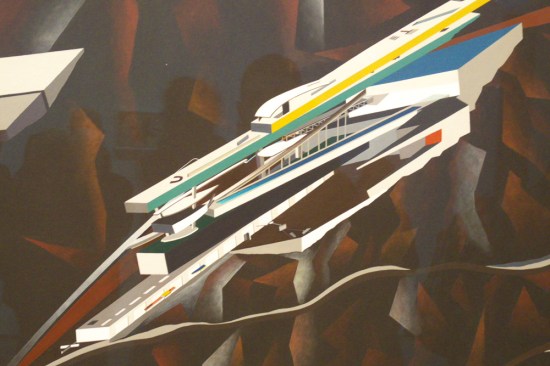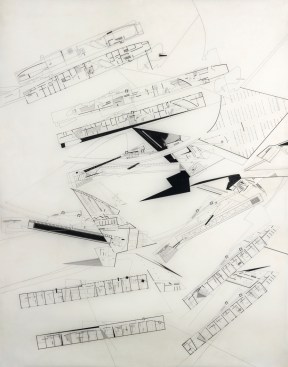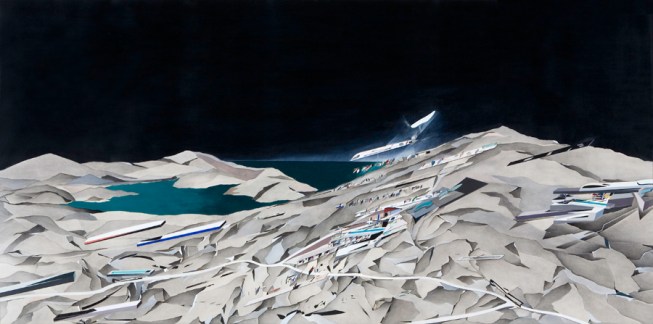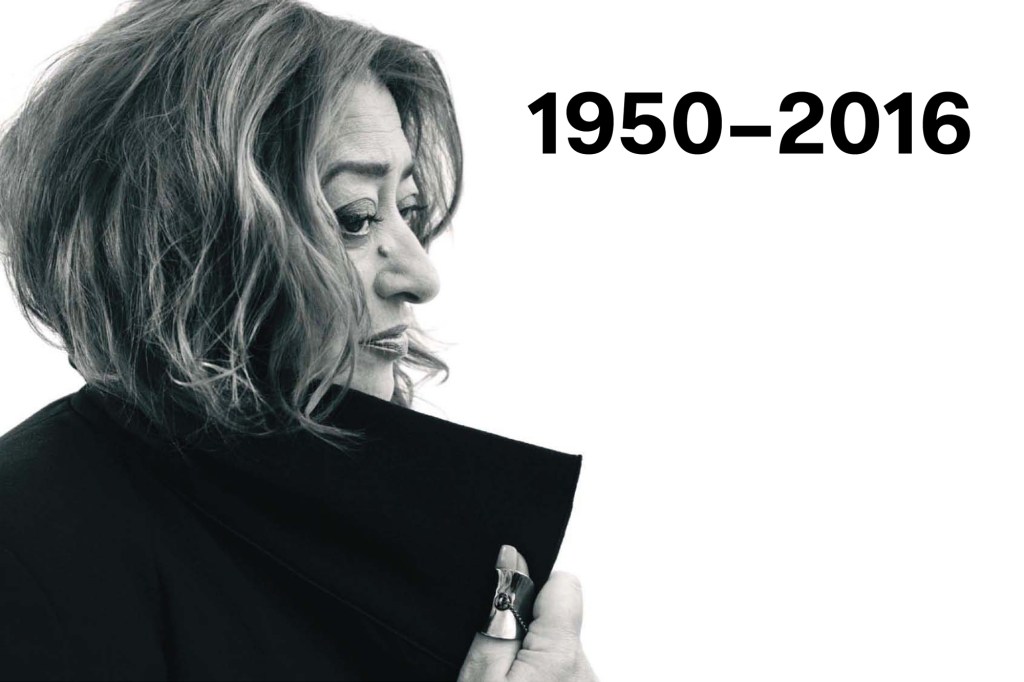In 1982, Zaha Hadid changed our world. Her winning entry into the Hong Kong Peak competition showed us an architecture that refused to accept the boundaries between buildings and cities, between cities and landscapes, or between reality and the myth of a new world. She broke not just the box, but also the very boundaries of gravity. Her drawings exploded our preconceptions and we could go wandering through these new paths, at times fractured and at other times sinuous, in which she was our guide. She remained our greatest architect of the new and the possible for the following 34 years, and I can only wish she could have continued that work.

photo by John Hill
Detail
Over the years that followed that moment when we saw those images in magazines and exhibitions and our jaws dropped open, wondering if this was real or could be so, she made the promises she had drawn out of Hong Kong eminently real in buildings that curved, swooped, cantilevered, and looped around to contain us while leading us on a magic carpet ride (she talked of the inspiration she gained from the carpets in her childhood home in Iraq) into a realm of spatial continuity. For that is what she offered: architecture that would include, that would be democratic, that would open up and shelter—even in conditions, whether physical or political, that were constricted.

You cannot separate Zaha Hadid’s work from her personality. I hope and trust that we will remember her not as a diva or as imperious, but as somebody who was forceful, clear, and able to pursue her vision despite the many obstacles that stood in her way. Translating her kind of architecture into built form took a heroic effort that she labored at all her life. Doing that as a woman from another country living in England was even more difficult. She was able to achieve so much because she was a true friend and mentor to countless collaborators, friends, and colleagues, including myself, and thus inspired a loyalty and devotion in all of us that sought to match hers.
As is the case with all great architects, her buildings will be her lasting memorials. In Zaha Hadid’s case, she also leaves a legacy of paintings and drawings that carry the achievements of those designs she saw constructed into a realm that will inspire us all for generations to come. What is just as important is that she leaves us the memory of a woman who, as a person and in her architecture, amazed us, spurred us to see and do better, and who let us imagine—and experience—a more beautiful, more free, and more open world.

